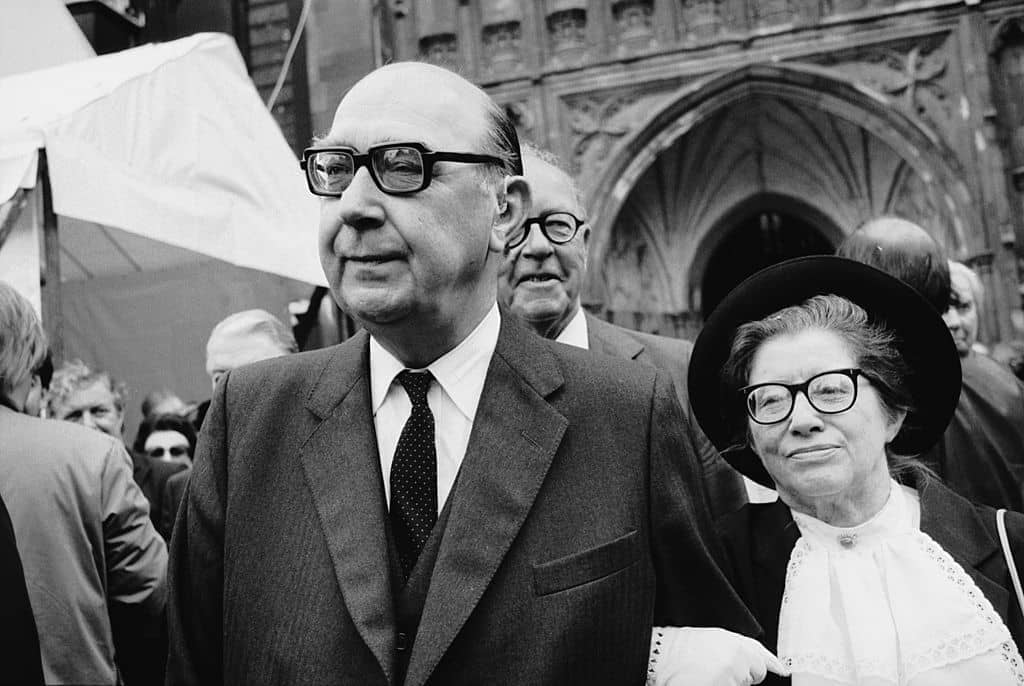A couple of years ago I taught The Whitsun Weddings by Philip Larkin to some A-level students. In the last class they summed up their feelings about his poetry. ‘It’s bare depressing, innit’, said someone (this wasn’t Eton), and someone else agreed: ‘I guess it’s good poetry but I can’t lie, it’s way too gloomy for me.’ Then one young man piped up: ‘But that’s how life is for a lot of people – you know, really bleak.’
Yes, I quietly thought, and you might discover that acquaintance with bleakness awaits you, too. But hang on, aren’t today’s teenagers meant to be depressed and anxious? One of the girls who had dismissed him as too depressing had been off for a term with mental heath issues. Don’t they therefore connect with the humbug from Hull? It doesn’t quite work like that. Depression has different faces. There are different breeds of black dog.
When I was an undergraduate I was anxious and depressed most of the time, and plain lonely. But I didn’t feel much affinity with Larkin; he seemed a marginal figure, not a Great Poet. I was anxious and depressed in a dramatic, stormy way; the idea of settling in to suburban gloom seemed remote. A humdrum job in a library! Oh dear! I would rather die. Fast forward a few decades and things look rather different. I have done a stint as a librarian in fact.
Larkin can help us question the orthodoxy that depression is a pathology, that we’re meant to be as happy as physically healthy
Larkin’s gloom is not at all straightforward. The glum old sod act was partly a mask, hiding a more dramatic and stormy soul (and also hiding an adventurous love life). As a youth he had an acute sense of vocation, in the manner of a Romantic, but he had to hide the earnest fullness of this from cool Kingsley. He began to feel that he had pledged himself to the grand task of poetic truth-telling, scuppering his chances of normal happiness – and he berated himself for the boyish pious idiocy of the decision. Or half-berated himself, for he realised that this painful ambiguity drove him to poetry. His most psychologically revealing poem is ‘Send No Money’. He presents himself as a naive boy who eagerly volunteered to be a truth-teller; it turns out that the only truth he has to tell is the dull bleakness of life.
So this is hardly normal depression, whatever that might be. But the odd thing is that he used this abnormal psychodrama to make himself the voice of ‘normal depression’. Though on one level he is obviously very present in his poems, he also works very hard to counter this, mostly by constructing a clownish (Boris-ish) act (‘A Study of Reading Habits’ is my favourite little performance). But also through story-telling and ventriloquism – of a Victorian rape-victim, of a mum in a playground, of old ladies being faith-healed (‘Moustached in flowered frocks they shake’). He refuses to offer sincere reports of his own feelings. He is determined to seem not a poet who writes about his depression, but a poet who sees the bleak truth of life. And he pulled it off, to an extent that is uncanny, miraculous. He is not primarily seen as a sufferer from depression, but as a poet who expressed something that we all sort of know, unless we’re complete air-heads.
This makes him an important figure in the current debate about depression and mental health. He can help us to question the orthodoxy that depression is a pathology, that we’re meant to be happy just as we’re meant to be physically healthy. By closely identifying happiness with normality, it makes lots of us feel that we’re failing to be healthily happy. It tries to address this, by saying that mental health issues are hugely common, nothing to be ashamed of. But this doesn’t quite work, for it underlines the notion that depression and anxiety are pathological. It invites the teenager to see her angst as the beginnings of serious mental illness – and more or less forbids her parents from questioning this, telling her it’s just growing pains.
What’s the alternative? A cultural assumption that painful psychological difficulty is baked in to human existence. An understanding that a bleak view of life is part of the truth, a valid perspective, or voice in one’s head. Freud said that the aim of psychoanalysis is to transform hysterical misery into ordinary human unhappiness. This line is really the key to Larkin’s poetic vision. Though not an obvious Freud fan, he in fact absorbed him very deeply (via Lawrence and Auden). The influence is clear in his most famous poem, in which parental influence is so tenderly reflected upon.
He is the poet of ordinary human unhappiness. This, alongside the sheer quality of his poetry, is why his star has risen so high since his death. For we sense that there is sanity and wisdom here, in this assertion of life’s bleakness, and we sense that our culture has become increasingly illiterate about this. Because a gloomy perspective is now so closely tied to individual pathology, we are not sure how to give voice to it without sounding like like we need a double dose of Prozac. It is too counter-cultural to say straight, that sane grown-ups are deeply acquainted with misery, disappointment, fear of age and the only end of age. His poetry, partly because it mixes gloom with humour, allows us to acknowledge the bleak perspective indirectly, semi-ironically. We can see it as a shared cultural thing, which de-fangs it a bit.
Now let me annoy some people by saying that this glumly realistic vision of life is rooted in religion. In fact it would annoy Larkin too. In Judeo-Christian tradition, humans are weak, prone to error and fear and despair, trapped by dark desires, in need of God. Even if they are seemingly doing fine, this is their underlying reality, which might erupt and drag them down tomorrow. Of course Freud’s pessimistic anthropology was steeped in this notion.
Despite his atheism, his poems contain a few echoes of the Fall: it’s there in his jokey self-portrait as a ‘One of those old-type natural fouled-up guys’, in his sense of exclusion from the ‘paradise’ of sexually liberated young lovers, and in his final brilliant pondering of his disaffection, which is ‘Something to do with violence / A long way back, and wrong rewards, / And arrogant eternity.’ That final phrase, which out-does Yeats, shows the survival of the youthful Romantic vision, the half-secret seed of it all.
Larkin’s popularity has a quasi-religious aspect: he keeps us in touch with this tradition, which we obscurely know we need.







Comments